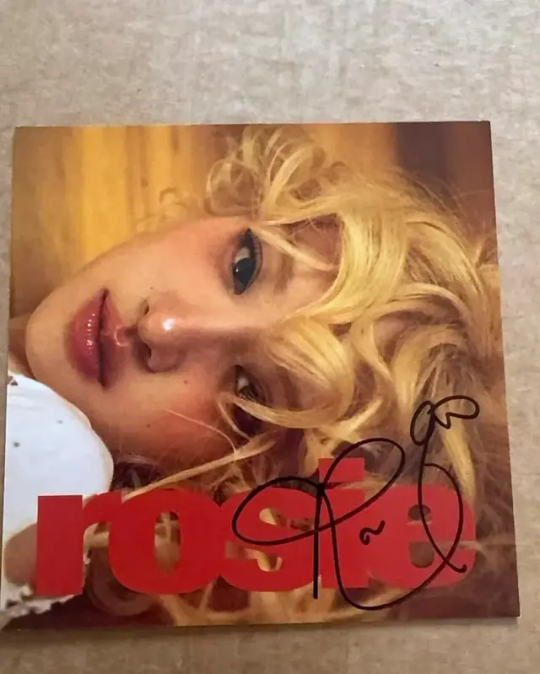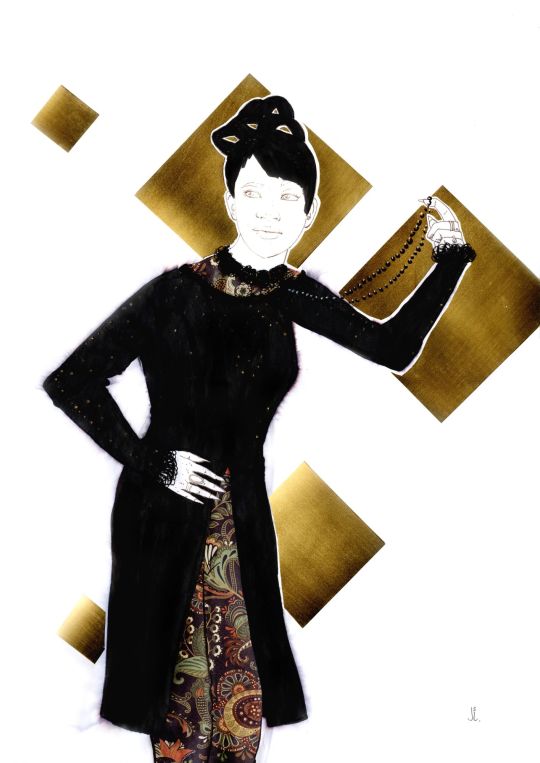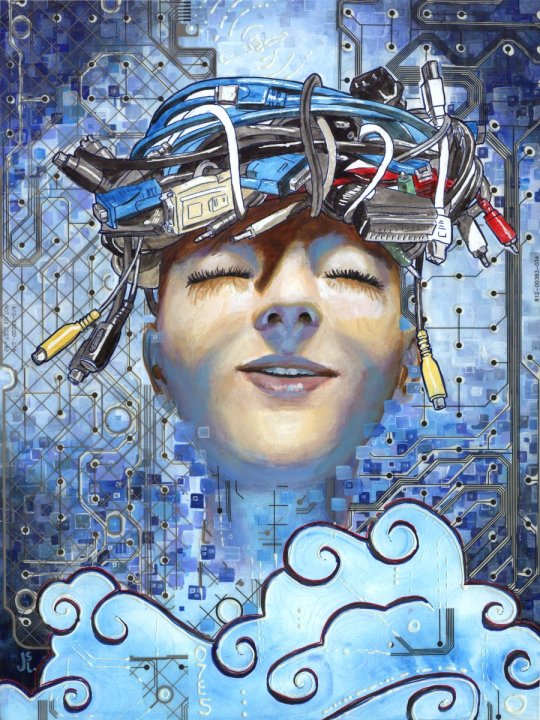#ArtDiscussion
Explore tagged Tumblr posts
Text
“Untitled” (Portrait of Ross in L.A.)

Félix González-Torres, Untitled (Portrait of Ross in L.A.) (1991). Multicoloured cellophane-wrapped candies, ideal weight 175 lbs. Art Institute of Chicago.
Félix González-Torres’ Untitled (Portrait of Ross in L.A.) is a poignant, interactive installation that challenges traditional notions of portraiture, memory, and loss. It consists of a pile of candies with an ideal weight of 175 pounds—the healthy weight of his late partner, Ross Laycock. The artwork invites viewers to take a piece, slowly diminishing the pile over time. Both deeply personal and universally resonant, this work transforms grief into an act of participation, engaging audiences in reflecting on love, illness, and impermanence.
A Portrait Beyond the Canvas
Rather than a conventional painted portrait, González-Torres redefines representation through something ephemeral: candy. As visitors take pieces, the work physically diminishes, mirroring Ross’s decline due to AIDS-related complications. However, galleries often replenish the pile, evoking themes of renewal and endurance. This duality—loss and regeneration—creates an evolving and deeply personal experience for each viewer.
The Power of Participation
Unlike traditional artworks that are passively observed, Untitled (Portrait of Ross in L.A.) requires engagement. Each candy taken represents an intimate exchange, connecting the audience with Ross’s memory. Though simple, the act of consumption carries layered meanings: nourishment, care, and even complicity in loss. By making viewers active participants, González-Torres erases the boundary between observer and subject, turning remembrance into an ongoing, collective act.
AIDS, Love, and Visibility
Created during the height of the AIDS crisis, this piece is a quiet yet powerful response to the erasure of those lost to the epidemic. The vibrant candies stand in contrast to the stigma and silence surrounding AIDS, transforming grief into something tactile and colourful. Ross’s presence is not only memorialized but also physically shared, reinforcing the importance of love, remembrance, and the fight against invisibility.
Reflecting on the Fragility of Life and Memory
As the candy pile fluctuates, it forces us to confront the impermanence of life and the ways we hold onto memory. What remains after someone is gone? How do we preserve love beyond physical existence? By dissolving the boundary between art and life, Untitled (Portrait of Ross in L.A.) ensures that Ross’s presence lingers, not just in the gallery, but in the hands and minds of those who engage with the work.
Reflecting on Art, Memory, and Grief
What does Untitled (Portrait of Ross in L.A.) teach us about how we remember the people we love? How does the participatory nature of the work shift our understanding of art, loss, and remembrance?
#FélixGonzálezTorres#UntitledPortraitOfRossInLA#ContemporaryArt#ArtAndAIDS#MemoryAndLoss#ParticipatoryArt#InteractiveArt#ArtAndGrief#Portraiture#ArtBlog#ArtAndPolitics#ArtAndLove#AIDSActivism#EphemeralArt#ArtOfTheDay#ArtDiscussion#LGBTQArt#ArtAndIdentity#ArtRemembrance
0 notes
Text
Could AI Platforms Like Charmed AI Replace Traditional 3D Art Techniques?

AI-powered platforms like Charmed AI are revolutionizing the 3D art creation process, making it faster and more accessible. Could these AI tools eventually replace traditional 3D art techniques? Let’s explore this thought experiment.#CharmedAI #FutureOf3DArt #AI #DigitalArt #AIvsHuman #ContentCreation #3DModeling #TechInnovation #ArtDiscussion #Creativity
Scenario: Imagine a future where 3D art creation is entirely driven by AI tools like Charmed AI. Artists and creators use AI to generate models, textures, and animations in minutes, removing the need for manual sculpting, rigging, and texturing.
Analysis:
Potential Benefits:
Time Savings: AI tools can generate high-quality 3D assets in minutes, drastically reducing the production time for art projects.
Accessibility: With AI handling the technical aspects of 3D creation, more creators, including those without specialized training, can participate in the world of 3D art.
Challenges:
Artistic Expression: While AI tools can create 3D assets quickly, the creative nuances and artistic choices that define a unique piece of art may still require a human touch.
Quality Consistency: Ensuring consistent quality across projects and styles might be challenging without manual adjustments, especially for highly detailed or customized works.
Do you think AI platforms like Charmed AI could replace traditional 3D art techniques, or is there still a need for manual artistry in the world of 3D creation? Share your thoughts below!
Join the conversation about the future of 3D art with Charmed AI. How do you see AI transforming the creative landscape in the years to come?
#CharmedAI#FutureOf3DArt#AI#DigitalArt#AIvsHuman#ContentCreation#3DModeling#TechInnovation#ArtDiscussion#Creativity
0 notes
Text
Exploring the Realms of Good Art: A Journey for Creatives
Have you ever wondered what makes art truly captivating? Art, in its countless forms, speaks to each of us differently. In this exploration, we dive into the elusive concept of good art. What makes some pieces stand out and resonate across ages and cultures? Let’s unravel this together!
What is Good Art?
The beauty of art lies in its subjective nature. What moves one person might not even catch the eye of another. As Picasso once said, "Art is a lie that makes us realize truth." Think about what good art means to you. Is it about technical skill, emotional impact, or the story behind it?
A Historical Perspective
Art has evolved significantly over centuries. The Renaissance era worshiped realism and proportions, while the Impressionists broke the mold with their play on light and color. Each period had its own definition of good art. What’s your favorite art movement, and why?
The Building Blocks of Art
Whether it’s the haunting eyes in a Caravaggio or the serene blues in a Hokusai, certain elements make artworks stand out. Composition, color theory, the portrayal of emotion, and the underlying message are all crucial. Which element do you find most compelling in art?
The Digital Age and Art
Today, digital art is reshaping our understanding of creativity. With tools like Procreate and platforms like Instagram, art is more accessible and diverse. How do you feel technology is influencing the art world?
Your Voice Matters
I reached out to some Tumblr artists, and here’s what they had to say about good art [insert embedded Tumblr posts]. What are your thoughts? Share your perspectives or your artwork!
Developing an Artistic Eye
Appreciating art is a skill. Visit local galleries or explore online exhibitions. Train your eye to notice the nuances, and don’t be afraid to form your own opinions. Art is a conversation, and your voice is important.
In Conclusion
Good art can’t be confined to a simple definition. It’s an ever-evolving conversation between the artist and the viewer. What's your take on good art? Share your thoughts, reblog with your favorite piece of art, and let's keep this conversation alive!
1 note
·
View note
Text
Is this Rosie signed art card legit?

🌍 | https://celebhub.co.uk/is-this-rosie-signed-art-card-legit-2/?fsp_sid=452 Tags: #Blackpink #Celebrity #Image #IsthisRosiesignedartcardlegit #Kpop #Reddit #RosieSignedArtCard #ArtAuthentication #ArtCollectibles #LegitCheck #SignedArt #ArtLovers #CollectibleArt #ArtDiscussion #ArtAppreciation #TumblrArtCommunity
0 notes
Text
Laugh or Cry? Conquering Pain & Finding Art in Life's Brutality
Laugh or Cry? Conquering Pain & Finding Art in Life's Brutality https://www.youtube.com/watch?v=Nio8DFnY1TE The full episode drops May 4th at 9 a.m. PST! You can find it anywhere you stream other podcasts or right here and don't forget to subscribe! Explore synchronicity and resilience as we discuss shared experiences and bouncing back. Discover how to laugh through pain, embody wisdom, and avoid taking life too seriously. What does art mean to us? Join our introspective conversation! #Synchronicity #Resilience #SharedExperiences #BouncingBack #LaughThroughPain #EmbodyWisdom #LifeLessons #ArtDiscussion #IntrospectiveTalk #ComedyAndPain via Iris of my I https://www.youtube.com/channel/UCwiU5aVbhY1cI22Z0tmhMxQ April 28, 2025 at 08:56PM
#technology#spirituality#artist#inspiration#podcast#passionovermoney#financialfreedom#personalgrowth
0 notes
Photo

KOLAJ LIVE ONLINE
Collage Communities Forum
Saturday, November 21st, 2020 1PM EST/10AM PST
Collage is unique in the larger art world in that communities and collectives play an important role in the production and promotion of the art form. Collage groups organize exhibitions, run online calls to artists, facilitate exchange across borders. In this virtual forum, leaders of collage communities in North America, Europe, and Latin America will share their experience bringing artists and collage enthusiasts together. Collage Communities Forum is presented by Kolaj Institute in conjunction with the launch of the International Directory of Collage Communities. MORE
*****************************
Kolaj LIVE Online is a series of virtual programs in the form of forums, panels, workshops, artist talks, studio visits, and other activities that allow people to come together, learn and talk about collage, and connect in real time to the collage community.
Visit the Series Website
#collage#collage art#collage artist#art#artist#kolajmagazine#kolajliveonline#onlineart#virtualart#artforum#artdiscussion#artistcommunity#artcommunity#collagecommunity
5 notes
·
View notes
Photo

Here are a few pieces i did for fun and practice. There are mistakes but i finished them anyway because I heard that improvement is greater in those that produce a lot versus those that produce a few pieces that are perfect. Im not sure though at this point if I am improving or just wasting paper! How does it work for you? Do you only continue working on a piece if there have been no mistakes? #paintingpractice #artoftheday #watercolor #gouache #colorfulart #instaart #arttalk #arthelp#feedback #artdiscussion #covenofheartsartcollective #paintingtheskykingdom #spiritanimal #hummingbird #cougar #fox #illustrationartists https://www.instagram.com/p/B8_zGcMJPGJ/?igshid=26wmj7p1ut7i
#paintingpractice#artoftheday#watercolor#gouache#colorfulart#instaart#arttalk#arthelp#feedback#artdiscussion#covenofheartsartcollective#paintingtheskykingdom#spiritanimal#hummingbird#cougar#fox#illustrationartists
2 notes
·
View notes
Photo

@forloveart Way to go and congrats 🎈🎊🍾🎉 on other recent accomplishments that will bring your organization to another level! Super proud 🥹 #greatnonprofits #loveandart #therapueticart #artdiscussion #artfortherapy (at For Love & Art) https://www.instagram.com/p/CkwZOt8PCYs/?igshid=NGJjMDIxMWI=
0 notes
Photo




I have a rocky relationship with collage. I do love the technique, but few other media feel to me like I'm not taking things seriously. Which is odd because it does require precision and planning, probably more than just painting where I can always add another layer. Still, there's a lingering feeling of being childish. I have identified one part of it as being unhappy with the lack of immersion - being a fantasy/scifi illustrator, I usually try to provide a window into another world, which seems impossible with collage unless presenting "in-world" art.
In these examples, I have used materials from simply adding yarn to the dreaming cat and good old patterned paper to the lady with fans, but also old keyboard foils to the blue portrait, or metal and adding crochet directly into the paper for the lady in black, and also punching holes into that one.
What do you think about collage? Do you use it often or never?
0 notes
Photo

Art is Everywhere and often it’s impossible enjoy it or appreciate it at the time. I’ll talk about this topic in today’s video around lunch time. It’s a busy day. Tonight I’ll be hosting the seventh Live Art Sale at the markrushtongallery.com - on YouTube, FB, and Twitch. Join my mailing list at the gallery. #markrushtongallery #markrushton #art #arttalk #liveart #artdiscussion #fineart #abstractart https://www.instagram.com/p/CcXuLqtOuDN/?igshid=NGJjMDIxMWI=
0 notes
Text
For the Love of God

Damien Hirst, For the Love of God (2007). Platinum, diamonds, and human teeth. White Cube Gallery, London, England.
Damien Hirst’s For the Love of God (2007) is an artwork that has drawn as much fascination as controversy. At its surface, it’s a human skull, cast in platinum and adorned with 8,601 diamonds, creating a dazzling yet unnerving symbol of mortality. This provocative sculpture forces us to confront the stark realities of life and death, while simultaneously raising questions about how we assign value to both the material and the intangible. By blending these elements, Hirst pushes the boundaries of art, luxury, and our understanding of mortality.
Death as Luxury: A Paradox of Beauty and Morbidity
At first glance, the combination of a human skull and diamonds seems incongruous—death, the inevitable end of all life, paired with the shimmering allure of precious jewels. The skull, traditionally associated with death and mortality, is transformed into an object of luxury and excess. The diamonds, which represent wealth and eternity, add another layer of complexity to this piece. What Hirst is ultimately exploring is how the very idea of death can be commodified, presented as something both inevitable and desirable through the lens of materialism.
Through this juxtaposition, Hirst forces us to grapple with our own fear of death and how society’s obsession with immortality and wealth permeates our attitudes toward both life and death. Are we so determined to transcend mortality that we turn it into a commodity? Does the value of the skull increase because of the diamonds, or does the diamonds�� value diminish by being placed on something so impermanent?
The Concept of Immortality Through Materialism
For the Love of God also explores our desire for immortality, though not through traditional means. Rather than offering a religious or spiritual approach, Hirst uses the diamonds—the symbol of permanence in our consumer-driven world—to contrast the fragility of life. The skull, though lifeless, is presented as eternal due to its extravagant adornment. The diamonds, which represent eternity, suggest that humans attempt to overcome the finality of death through luxury. They become a symbol of our quest for everlasting existence—seeking immortality not through legacy or meaning, but by the accumulation of wealth and status.
The skull and diamonds create a powerful statement on the human need to escape death, not by transcending it in a spiritual sense, but by preserving it in a way that defies nature. The juxtaposition of mortality and luxury forces viewers to reflect on how we choose to confront the inevitability of death. Can material wealth provide us with true immortality, or does it merely distract us from the transient nature of existence?
The Value of Art: What Makes This Worth So Much?
At the heart of For the Love of God lies the question of value. Hirst has intentionally created a work that forces us to reconsider how we value art, life, and death. The cost of the piece, which exceeds millions of dollars, highlights how art can sometimes be valued based on its materials, status, or the artist’s notoriety, rather than its intrinsic meaning. The diamonds themselves are undeniably valuable, yet it is the context—Hirst’s commentary on life and death—that gives the skull its cultural and emotional worth.
The skull, as a symbol of human mortality, becomes an ironic metaphor for the way we assign monetary and societal value to both art and life. Is the artwork valuable because of the concept it conveys, or because of the wealth it represents? Does the artist’s hand and intention carry more value than the materials themselves?
Art and Death: A Controversial Celebration of Mortality
For the Love of God does more than simply depict a human skull. It makes death a subject of beauty and contemplation, forcing us to confront what we often choose to ignore. The artwork raises difficult questions: Can death be beautiful? Is the fixation on luxury an attempt to mask the inevitability of death? By presenting death in such a luxurious form, Hirst challenges the norms of how we think about mortality, beauty, and the human experience.
The artwork questions our relationship with death, materialism, and the fleeting nature of life. But it also asks us to consider the intersection of art, commerce, and meaning in the contemporary world. The idea that a skull—representing the end of life—can be adorned with diamonds, which signify status and eternity, forces us to examine the contradictions inherent in our cultural values.
Reflecting on the Concept of Mortality and Materialism in Art
How does For the Love of God challenge our perception of life and death in art? What does it say about the role of materialism in the pursuit of immortality, and can art truly capture the essence of mortality through wealth?
#DamienHirst#ForTheLoveOfGod#ContemporaryArt#DeathAndArt#LuxuryAndMortality#ArtAndValue#ModernArt#ArtBlog#ConceptualArt#ArtReflection#ArtOfTheDay#ArtCollectors#ArtDiscussion#ControversialArt#ArtProvocation#Diamonds#LuxuryInArt#DeathInArt#Materialism#ArtPhilosophy
1 note
·
View note
Photo

Repost from @worldartgallery using @RepostRegramApp - Join us on Sat 25 August at 11am for a walkabout with artist @muchatuta and curator Carlyn Strydom from @museumher as they discuss 'Ukubhabha/Kumbururuka/To Fly at WORLDART. Ronald will also be doing a walkabout of his exhibition at @eclecticacontemporary on the same day. . . . #walkabout #discussingart #artdiscussion #contemporaryart #contemporaryartist #contemporarydiscourse #ronaldmuchatuta #museumher #worldartgallery #dialogue (at Worldart)
#walkabout#discussingart#artdiscussion#contemporaryart#contemporaryartist#contemporarydiscourse#ronaldmuchatuta#museumher#worldartgallery#dialogue
1 note
·
View note
Photo

IS-ST e’ orgoglioso di aver preso parte ad un evento incredibile come il 2’ Simposio sulle Sospensipni corporali tenuto a New York nel 2015 Se interessati, vi consigliamo caldamente di visitare il profilo degli organizzatori per vedere momenti di questo magico evento. Posted @withregram • @the.skin.project Some thoughts on art in the digital age from @orbism When we translate our real world art into a digital format, we're not only changing the context of the original moment, we're also modifying the narrative. This is not dissimilar to when we look at photos on our cellphones later on, and even choose to post them on social media for others to view them. The difference between a quick reshare of a moment from our phones, and one where artists intentionally revisit & alter the original media, is that the first is solely intended to share one's perception of a moment, and the latter is intended to share one's new interpretation or even recapture of a moment. Both are echoes of the original moment, both are valid. Intentions may be different, but both are choosing to share an iteration of the original moment. Skin:NYC v1, 2015 Slice 3, Night 2 work by @bruno_bma Concept: Emotion Models: @rita.santana.tattoo & Enrica Coltello Original photo by @timothyprime Graphic edits by @orbism #bodysuspension #hooksuspension #digitalart #photography #realworldexperiences #digitalassets #NFTart #NFTartist #installationart #artdiscussion #visceral #calmmoments #NYC (presso New York, New York) https://www.instagram.com/p/COw9L_fMgXu/?igshid=17ns5nicjlqxp
#bodysuspension#hooksuspension#digitalart#photography#realworldexperiences#digitalassets#nftart#nftartist#installationart#artdiscussion#visceral#calmmoments#nyc
0 notes
Audio
FLoMMCAST welcome to an art world you’ve yet to discover
FLoMMCAST is hosted weekly by alley scheffki and milk surface
episode 19 +「 having a flomm time 」
break music is provided by gage rivas mentioned links instagram.com/iamthebluerose www.facebook.com/iamthebluer0se/ instagram.com/hisimagination www.patreon.com/FeelinHemo instagram.com/taulant_salihi www.youtube.com/Kindofanerd
want to be heard on FLoMMCAST?
leave us a voicemail at (916) 822–7618
FLoMMCAST on itunes on google play on tunein on stitcher
FLOMM website
4 notes
·
View notes
Photo

Most artists have works they done that will probably never see the light of day again. I know I do. If we had an ugly painting contest, I bet I’d win. You know what, though? I do pull those paintings out of storage from time to time. After I look at them and ask myself, “what was I trying to do with this one?” I look at them in a different way. I know that because of those ugly paintings, I was able to achieve what I have achieved. I know that they ‘took one for the team’ to allow me to experiment and evolve. Artists shouldn’t be hard on themselves when they create something they don’t like. It’s part of the process, and it’s an important part. I just wanted to say that after reading a few posts from artists who felt they didn’t have the talent. You do. Keep at it and enjoy the process. That’s my two cents. . . . . . . #uglypaintings #arte #artists #artadvice #advice #artprocess #discussion #artdiscussion #createart #artstudio #paintings #workinprogress #talent #artcommunity #makeart #wscranmore (at Milwaukie, Oregon) https://www.instagram.com/p/CKaGO-Wn2EJ/?igshid=m9mkws193nsx
#uglypaintings#arte#artists#artadvice#advice#artprocess#discussion#artdiscussion#createart#artstudio#paintings#workinprogress#talent#artcommunity#makeart#wscranmore
0 notes
Photo


KOLAJ LIVE ONLINE
Navigating Digital and Analog Worlds: Collage and Printmaking
Wednesday, September 30, 2020 7PM-EST / 4PM-PST
David Wischer and Lisa Wicka, who each use digital and analog collage in their work, will have a conversation about their process, concepts, and strategies in printmaking and how manipulating existing imagery helps connect them with the ever-changing world around them. They will speak about how printmakers are constantly working with the repeatable image and how printmaking and collage are natural partners. The event is an opportunity for collage artists to explore a dialogue with printmaking and consider the role analog and digital plays in their practice. MORE INFO & REGISTER
*****************************
Kolaj LIVE Online is a series of virtual programs in the form of forums, panels, workshops, artist talks, studio visits, and other activities that allow people to come together, learn and talk about collage, and connect in real time to the collage community.
Visit the Series Website
#collage#collage art#collage artist#art#artist#kolajmagazine#kolajliveonline#onlineart#virtualart#onlineartevent#onlineevent#artdiscussion#artistdiscussion#analog#digital#digitalart#analogart
3 notes
·
View notes